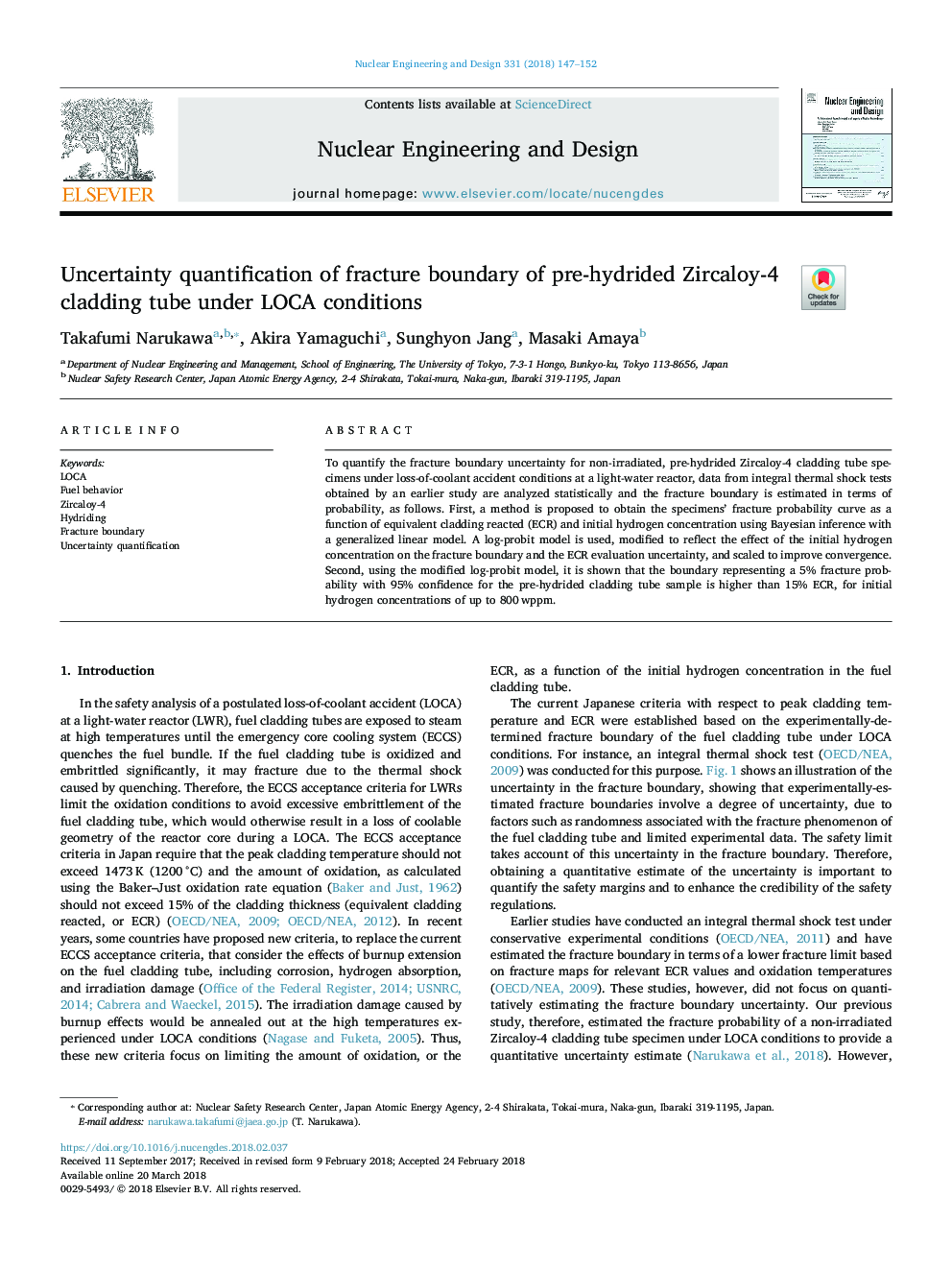| Article ID | Journal | Published Year | Pages | File Type |
|---|---|---|---|---|
| 6759002 | Nuclear Engineering and Design | 2018 | 6 Pages |
Abstract
To quantify the fracture boundary uncertainty for non-irradiated, pre-hydrided Zircaloy-4 cladding tube specimens under loss-of-coolant accident conditions at a light-water reactor, data from integral thermal shock tests obtained by an earlier study are analyzed statistically and the fracture boundary is estimated in terms of probability, as follows. First, a method is proposed to obtain the specimens' fracture probability curve as a function of equivalent cladding reacted (ECR) and initial hydrogen concentration using Bayesian inference with a generalized linear model. A log-probit model is used, modified to reflect the effect of the initial hydrogen concentration on the fracture boundary and the ECR evaluation uncertainty, and scaled to improve convergence. Second, using the modified log-probit model, it is shown that the boundary representing a 5% fracture probability with 95% confidence for the pre-hydrided cladding tube sample is higher than 15% ECR, for initial hydrogen concentrations of up to 800â¯wppm.
Related Topics
Physical Sciences and Engineering
Energy
Energy Engineering and Power Technology
Authors
Takafumi Narukawa, Akira Yamaguchi, Sunghyon Jang, Masaki Amaya,
